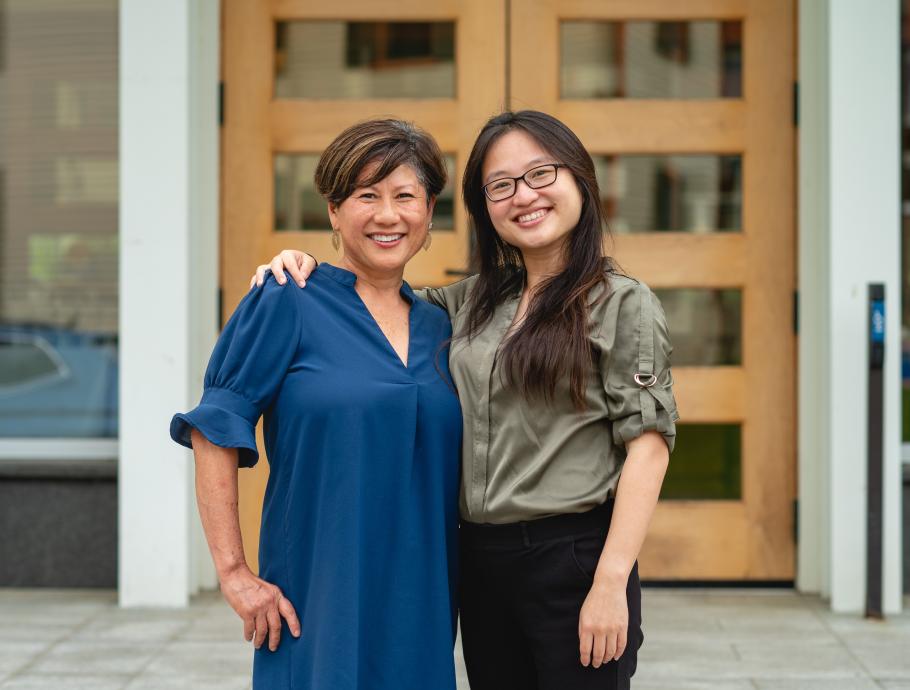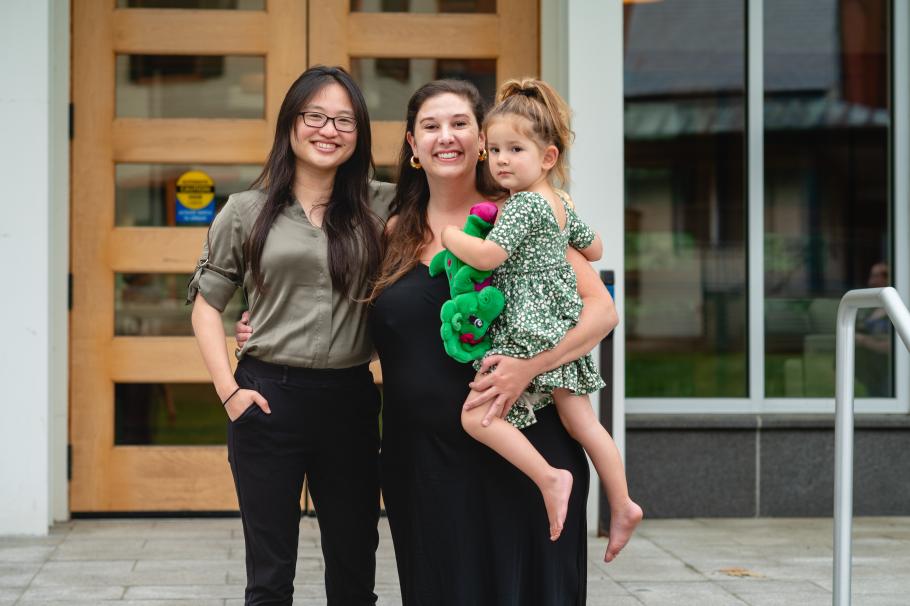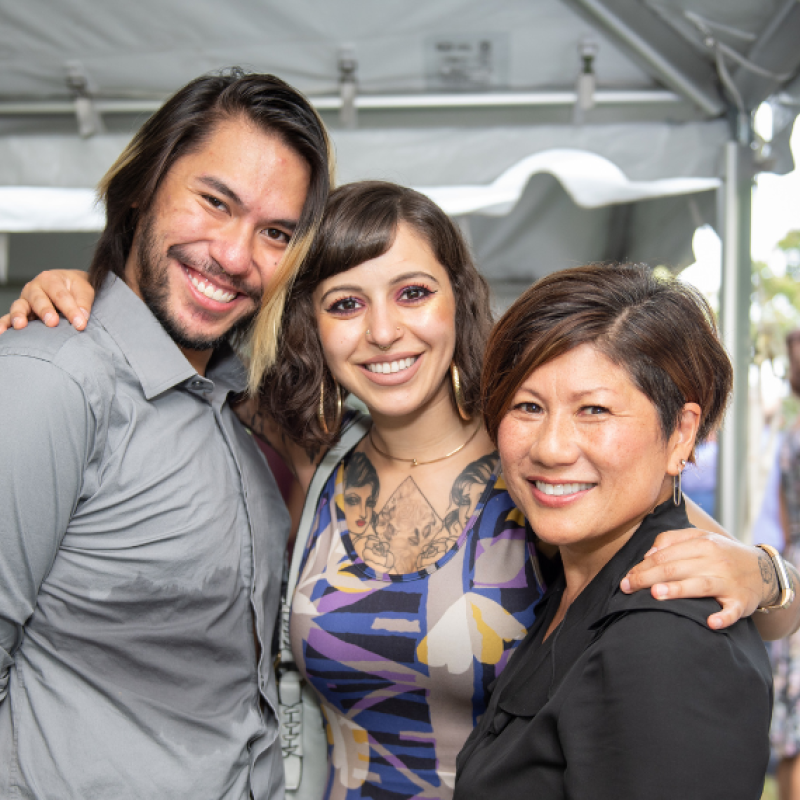
Receiving the 2024 SSW Emerging Leader Award, says Helen Chao M.S.W. ’19, feels like confirmation of what brought her to Smith in the first place. “I chose social work as a way to serve,” she said, “and I believe that the best way to serve is to lead.”
“I feel honored to have been chosen,” she added. “There’s a little bit of an ‘impostor syndrome’ feeling I have about it, but I’m grateful and I’m glad that my hard work is being recognized.”
Since graduating from Smith, Chao has certainly worked hard. Her first job was at LifeLong Medical Care, a Bay Area nonprofit started in 1976 by a group of Gray Panthers. Chao describes being “a street medicine clinical social worker” this way on her LinkedIn page: “Jumped out of vans with a nurse providing behavioral health and case management services to unsheltered individuals in East Oakland.”

She went on to work as a psychotherapist at a Kaiser Permanente mental health center in Oakland for two-and-a-half years, during which time, 2,000 mental health clinicians at the HMO’s Northern California facilities went on strike for more manageable workloads, reduced patient wait times, improved staffing and better wages. Chao was all in with the effort, spreading the word by teaching, leading and uploading TikTok dances, which went viral and garnered hundreds of thousands of views. (At 172 days, it was the longest strike by behavioral healthcare workers in U.S. history and won significant concessions from Kaiser, the largest private HMO in the country.)
Last year she started up her own private practice and, in March, joined Mind Therapy Clinic, in Larkspur, California, just north of San Francisco. The small group practice provides intensive outpatient services in person and online.
Chao provides Dialectical Behavioral Therapy (DBT) services in the clinic. “I started doing DBT in 2020, and I’ve been training ever since,” she noted. “It’s my primary modality.” Her approach is grounded in the psychodynamic theory she studied at SSW and informed by relational group work and liberation psychology.
“The majority of the patients I see are suffering from severe mental health issues, manifesting severe behaviors, including self-harm,” said Chao. Created by Marsha Linehan, Ph.D. in the 1980s, DBT has become the leading treatment for many complex disorders, including borderline personality disorder and post traumatic stress disorder. There are stages of treatment; Chao works primarily with people at Stage 1.
“It’s putting out fires, reducing behavioral or emotional dysregulation that is keeping someone from life,” she said. “The people I see are miserable, their lives must change, but they may be unwilling or unable to accept what is keeping them from changing their lives, or in an environment that makes that difficult.”
Chao was drawn to DBT because, she said, “I’m a logic-oriented, logic-based person, but I was also raised in an East Asian household, as a Buddhist.” A patient going through the DBT process works to recognize and reconcile opposing and contradictory elements of one’s personality and both to accept the complexity, the messiness of one’s inner life—and the world—and the need for change. In developing DBT, Linehan incorporated the Buddhist idea of radical acceptance as an essential concept. (Linehan is now a Zen Roshi, or “senior teacher.”)
“CBT is change-based, DBT is acceptance-oriented,” Chao said. “Both change and acceptance are true, and both are needed.” DBT is serious work, but Chao mentions that, like Zen Buddhism, it also uses “irreverent humor” to disrupt ways of thinking and engage someone’s attention.

Having grown up in the Silicon Valley and currently living in the Bay Area, Chao is very engaged by the topic of artificial intelligence. “I’m close to a number of people in the field, people who are invited to speak at AI conferences. It’s in the water I’m drinking.” While she herself is not using it professionally, she’s aware that it’s making rapid inroads in how mental health care is provided. So last March, Chao offered to give a workshop, “AI x Mental Health,” at the annual meeting of the American Group Psychotherapy Association. Chao, a Group Foundation board member, saw that “many of her amazing, inspiring colleagues were curious, possibly fearful, of AI and how it might affect their practices and their lives.”
The workshop was set up as a mock group therapy session that an AI program could “hear” via Zoom. “The session’s participants,” said Chao, “were floored by the accuracy and perceptions of the AI program’s report,” which provided a summary of the session, analyzed its emotional content, suggested possible interventions, and proposed an agenda for follow-up.
“There were multiple reactions, including curiosity, excitement, and legitimate concern. People had questions about how using AI would relate to informed consent, who would have access to the data generated, how the voice recording might be misused. But there was also a decrease in their fearfulness,” said Chao.
She herself believes AI can be a force for good but also wonders how it might change the therapeutic experience. “We experience therapeutic transformation in our bodies—a tightening in the chest, for instance—and the therapist responds to those accompanying physiological signs. It’s the dynamics of a session, the flesh-and-blood element. How does AI capture that?”
As a dancer since childhood, Chao has a highly developed sense of dynamics, of the flesh-and-blood elements of interactions. She started ballet classes at age 8; as an undergraduate at Carnegie Mellon University, she was on the CMU Ballroom Dance Team. A big part of her life is teaching, performing, and choreographing dance, as well as participating in dance competitions. She is an accomplished West Coast Swing dancer and more recently has been studying the art of Brazilian zouk. In videos of her performing in both genres, she moves gracefully, sensually, with dazzling precision and fully in step with her partner, in tight, fast-moving routines. She’s clearly enjoying herself, and there’s even a dash of that irreverent humor in her performances.

Her dedication to dance reflects a larger belief in the importance of striking a balance between one’s professional and private lives—maybe another way in which she is an emerging leader. “I’m not interested in throwing my whole life into my career, spending 80 hours a week doing one thing,” she said. “I really hope I can do multiple things, travel, be with family, train and compete.” She seems to be succeeding. Last year, Chao traveled to Jordan, and previously she has been to Taiwan, Iceland and Namibia, among other destinations. Her participation in competitions and other dance-related events takes her around the country and abroad.
For Chao, there’s a sort of dialectical relationship between dance and therapeutic work: one being physical and embodied, the other primarily observational, intellectual. There is contrast, but also cross-over. “Like therapy,” Chao said, “dance is part science, part art.”
And another pair of opposites, Chao points out, which are complementary, not contradictory: “Therapy is just for you; dance is just for me. I shift between thinking this, and being acutely aware that, in the end, both therapy and dance are for us.”


